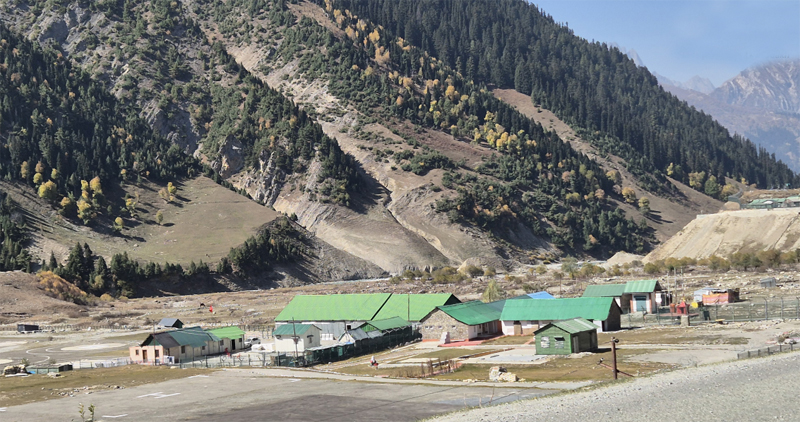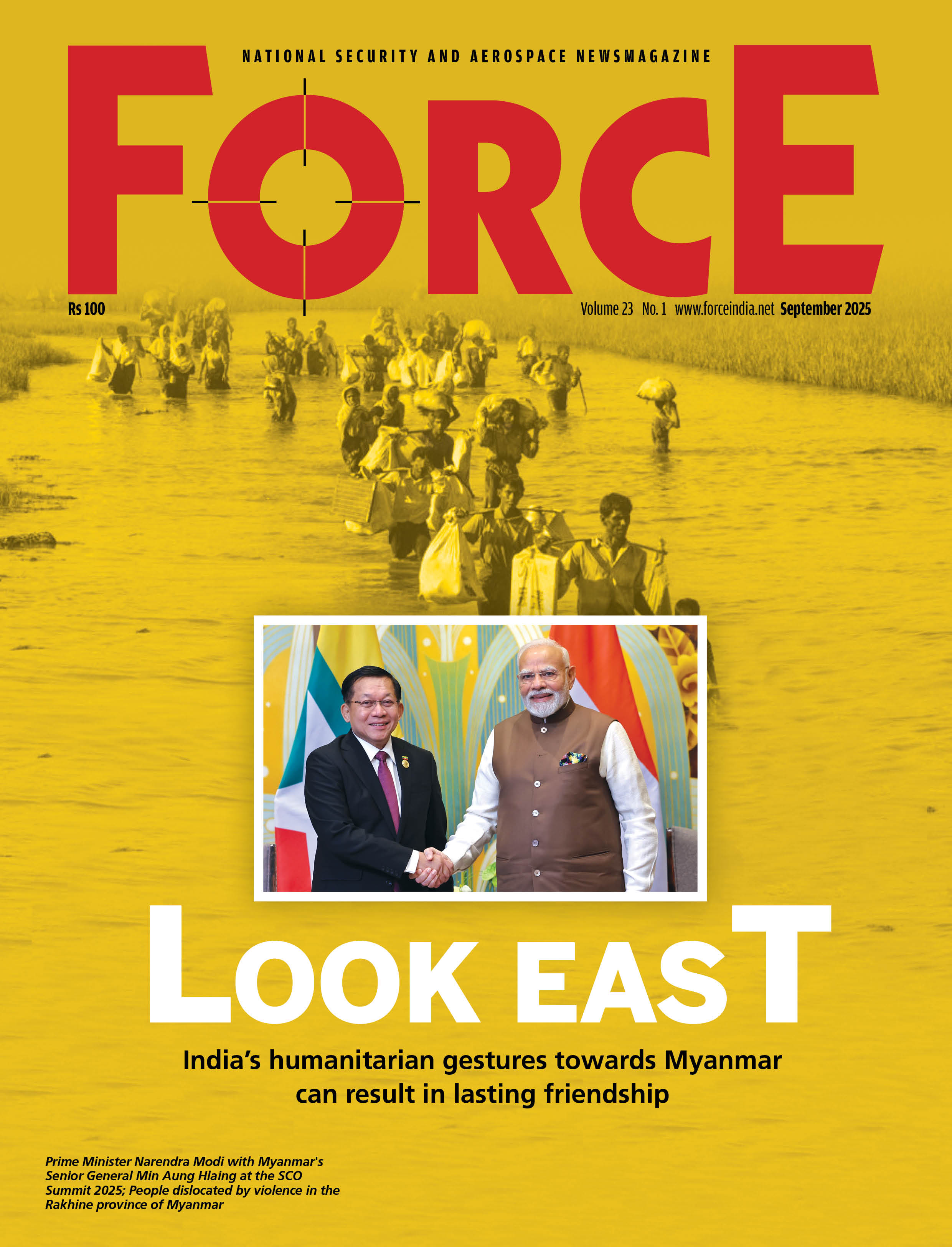Peace is Possible
 Brig BL Poonia (retd)
Brig BL Poonia (retd)
Last month I wrote how the widespread negative perception about China emanates from the border dispute, especially Aksai Chin. I wrote that a claim on any piece of territory can be made either by conquest or consent. And India has no record of any battle in which it had ever conquered Aksai Chin, or any treaty under which it was given to India. The British never laid any claim on Aksai Chin or North East Frontier Agency (NEFA), now Arunachal Pradesh, till they left India in 1947. So how was independent India justified in doing so? Since the very basis of our historical assumption is wrong, we are unable to amicably resolve our outstanding issues with China.
Until the 1962 war, China made no attempt to occupy any inch of Indian territory. In fact, it tried to settle the boundary issue in the spirit of accommodation. It was Prime Minister Jawaharlal Nehru who was recalcitrant. Believing China to be militarily weak, Nehru’s India tried to occupy Chinese territory through its ‘Forward Policy’, which we tend to overlook. Hence, in this article I will trace the origins of the contesting border claims in Ladakh as well as NEFA.
History of Aksai Chin Dispute
In 1865, a British officer from Survey of India, William H. Johnson visited Khotan (China) via Aksai Chin. Thereafter, he drew a boundary line showing Aksai Chin in Kashmir territory. It was named ‘Johnson Line’ (or Johnson-Ardagh Line), and the same was published in an atlas in 1868. It had no legal sanctity, since it was a unilaterally drawn line, that was sought to be proposed, but the British never communicated this as a boundary proposal to China. Interestingly, this is the line from which India derives its claim on Aksai Chin. Later, the British printed Johnson Line on its maps, with its legal status shown as ‘Boundary Undefined’. This didn’t create any dispute. The problem arose only when the same was unilaterally printed as international border, by removing its legal status of ‘Boundary Undefined’, by Nehru in 1954 in a ‘top secret’ exercise to counter China’s claim on Aksai Chin. More on it later.
History of McMahon Line
Historically, Tibet was a part of China since 1720, under the control of Quing dynasty. The sudden collapse of Chinese power in Tibet in 1911-12, tempted Lord Hardinge to capture the area which later came to be known as NEFA. Since a direct attack on Tibet would have resulted in a war with China, Britain convened a ‘Tripartite Conference’ in Simla, comprising British India, China and Tibet, in October 1913, since China exercised ‘suzerainty’ over Tibet, i.e., it controlled Tibet’s foreign policy. The Simla Conference did not result in any treaty to which China was a party, since China rejected the McMahon Line proposal.
Thereafter, the British India government played a trick, and secretly signed a ‘Bilateral Agreement’ with Tibet, assuring them independence from China. But even the Simla Convention of 1913 showed Aksai Chin as part of Tibet. Four months later, the British invited Tibet to Delhi for further discussions on Assam-Tibet border in February-March 1914. China was neither invited nor informed. A secret treaty was signed on 24 March 1914, and the alignment agreed upon was McMahon Line. However, this treaty was kept secret, since it was in violation of Anglo-Chinese Convention of 1906, as well as Anglo-Russian Convention of 1907, under which Britain was prohibited to enter into negotiations directly with Tibet except through an intermediary of Chinese government. In short, this treaty was illegal. Had it been legal, Britain would have occupied NEFA in 1914 only. Instead, it published McMahon Line on its maps only in 1937, yet showing it as ‘Boundary Undemarcated.’ It made no physical claim on NEFA.

The army camp at Baltal is a few kilometres short of Zoji la which leads to Ladakh
Annexation of NEFA
The Chinese power returned in Tibet in 1950, but soon China got occupied with the Korean War from 1950 to 1953. During this period, India ‘quietly’, without consulting China, annexed NEFA in 1951 by sending a strong patrol under Major Bob Khating of Assam Rifles, who hoisted the Indian flag at Tawang on 9 February 1951, forcing the Tibetan administration out of Tawang, in spite of its vehement protests. Thus, McMahon Line was ‘unilaterally’ transported from the maps to the ground as the de facto northeast boundary of India. Hence, NEFA (now Arunachal Pradesh), belongs to India only on the basis of the ‘Right of Possession’ and not on the basis of a legitimate treaty. That is why China lays its claim on Arunachal Pradesh. Even Pakistan Occupied Kashmir (POK) is held by Pakistan on the basis of the ‘Right of Possession’, and not through a force of treaty, hence India lays its claim on POK.
Thus, by annexing NEFA, India added 65,000 sqkm of territory, which legally belonged to China, but China did not protest. This puzzling silence of China can be construed as its acceptance of the McMahon Line, since it wanted to maintain friendly relations with India, and also resolve its remaining border issues, especially in Ladakh. But Nehru misconstrued China’s silence for its military weakness, which encouraged him to make similar moves to acquire more of the Chinese territory.
Despite this, China displayed patience by signing the famous Indo-China friendship treaty, i.e., the ‘Panchsheel Agreement’ (Five Principles of Peaceful Co-existence) on 29 April 1954. This treaty formed the basis of India’s foreign policy with China. Incidentally, in the mid-1950s, the slogan ‘Hindi-Chini Bhai-Bhai’ became popular in India.
Unilateral Change of Boundaries
However, on 1 July 1954, two months after signing this treaty, Nehru unilaterally converted the ‘Johnson Line’ into a permanent boundary on India’s official maps, by removing its legal status of ‘Boundary Undefined’, and thus manufactured the Indian claim on Aksai Chin. A.G. Noorani, an expert on legal and constitutional matters, known for the study of Indo-China boundary issues, has mentioned this incident in his book India-China Boundary Problem 1846-1947: History and Diplomacy. He writes, ‘It was a fateful decision. Old maps were burnt. One former Foreign Secretary told this writer how, as a junior official, he himself was obliged t
Subscribe To Force
Fuel Fearless Journalism with Your Yearly Subscription
SUBSCRIBE NOW
We don’t tell you how to do your job…
But we put the environment in which you do your job in perspective, so that when you step out you do so with the complete picture.








